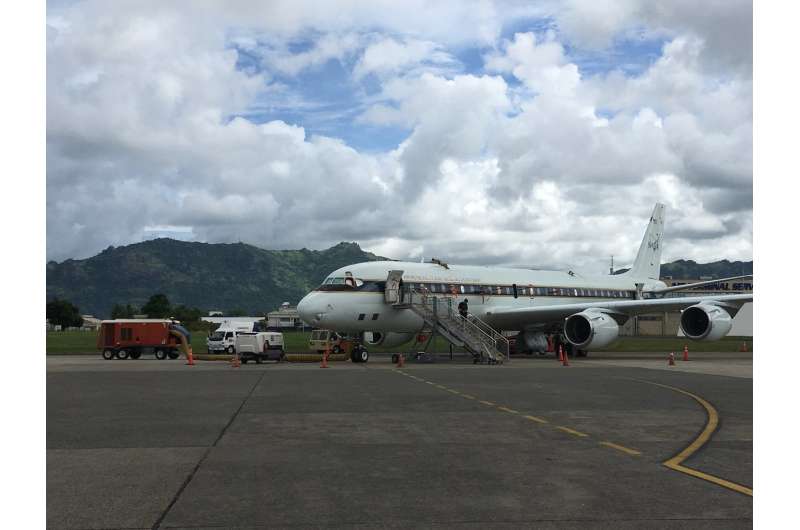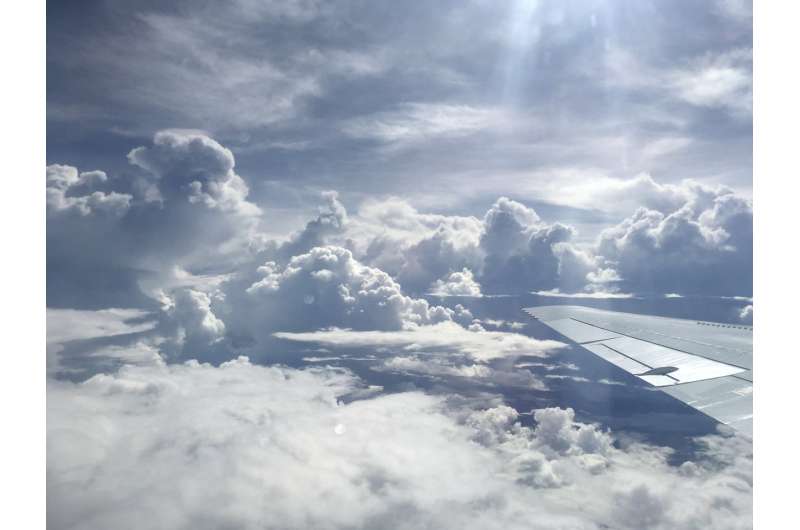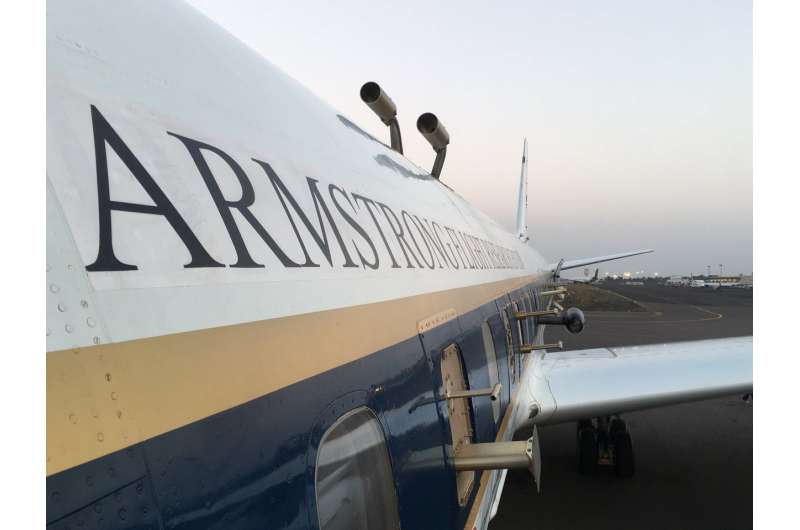Global airborne mission to make ozone hole detour

Atmospheric researchers depart this month on NASA's DC-8 research aircraft on their third survey of the global atmosphere. Taking place for the first time in Northern Hemisphere fall, the season gives them the unique opportunity to make a detour from their previous flight paths to fly underneath the Antarctic ozone hole.
The flight is part of NASA's Atmospheric Tomography (ATom) mission, an airborne field campaign to study atmospheric gases and pollution worldwide. ATom's previous deployments took place in Northern Hemisphere summer and winter, as part of an effort to understand how atmospheric particles and gases respond to changes in the seasons.
Carrying more than 20 scientific instruments that sample the air that they are flying through, the ATom mission's survey of the atmosphere is geared toward answering questions about how greenhouse gases and pollution cycle into and out of the atmosphere. Their flight path takes them to remote areas over the Pacific and Atlantic oceans, representing the world's cleanest air, where the majority of the measurements will be made. It's also where some of the previous deployments' biggest surprises have been. They found traces of pollution in the winds circling around Antarctica in the 2016 summer deployment and traces of African fires over the central Pacific in the 2017 winter deployment.

Ozone is one of over 200 gases and atmospheric particles being measured by the science team aboard the DC-8. "These include the primary greenhouse gases, like carbon dioxide, methane and nitrogen oxides," said Paul Newman, chief scientist for Atmospheric Sciences at NASA's Goddard Space Flight Center in Greenbelt, Maryland, and mission scientist for ATom's third deployment. "Add to that all the famous ozone-depleting substances and then other more exotic species."
The DC-8 along with a full complement of scientists will depart from its home at NASA's Armstrong Flight Research Center in Palmdale, California, for the Arctic and Alaska, island-hopping down the Pacific Ocean to Christchurch, New Zealand, then across to Punta Arenas, Chile. The science team will fly over Antarctica and below the ozone hole from this southernmost tip of Chile, before continuing on their journey north up the Atlantic Ocean to Greenland before returning to California.
The journey from pole to pole and back again will take place over 30 days that began on Sept. 28. The plane will make a series of gentle descents and ascents, from 500 feet above the surface to 35,000 feet, in order to sample the atmosphere from the surface to the cloud tops.

The ATom team's flight underneath the Antarctic ozone hole will take place in October when the layer is at its seasonal thinnest. This will allow the science team to directly measure the gases and aerosols that are associated with the chemistry that creates the "hole" in the ozone layer.
In the upper atmosphere, ozone acts as a global sunscreen, protecting life on Earth from harmful ultraviolet radiation that can cause skin cancer, cataracts, and damage plants. Each September and October, a hole forms in the Antarctic ozone layer during springtime in the Southern Hemisphere, triggered by chemical reactions between sunlight and gases that accumulate in the upper atmosphere at this time of year. The disappearance of the protective layer of ozone has been monitored from the ground and satellites since its discovery in the 1980s.
ATom's current flights are the third of four deployments that will take place through 2018. It is an Earth Venture mission funded by NASA's Earth System Science Pathfinder program at NASA's Langley Research Center in Hampton, Virginia, and is managed by the Earth Science Project Office at NASA's Ames Research Center in California's Silicon Valley. A team of over 100 people—scientists, engineers, flight crew and staff—across government agencies and universities will be supporting the mission both in the air and from the ground.
More information: For more information about the ATom mission, visit: www.nasa.gov/content/2016-earth-expeditions-atom
Provided by NASA



















